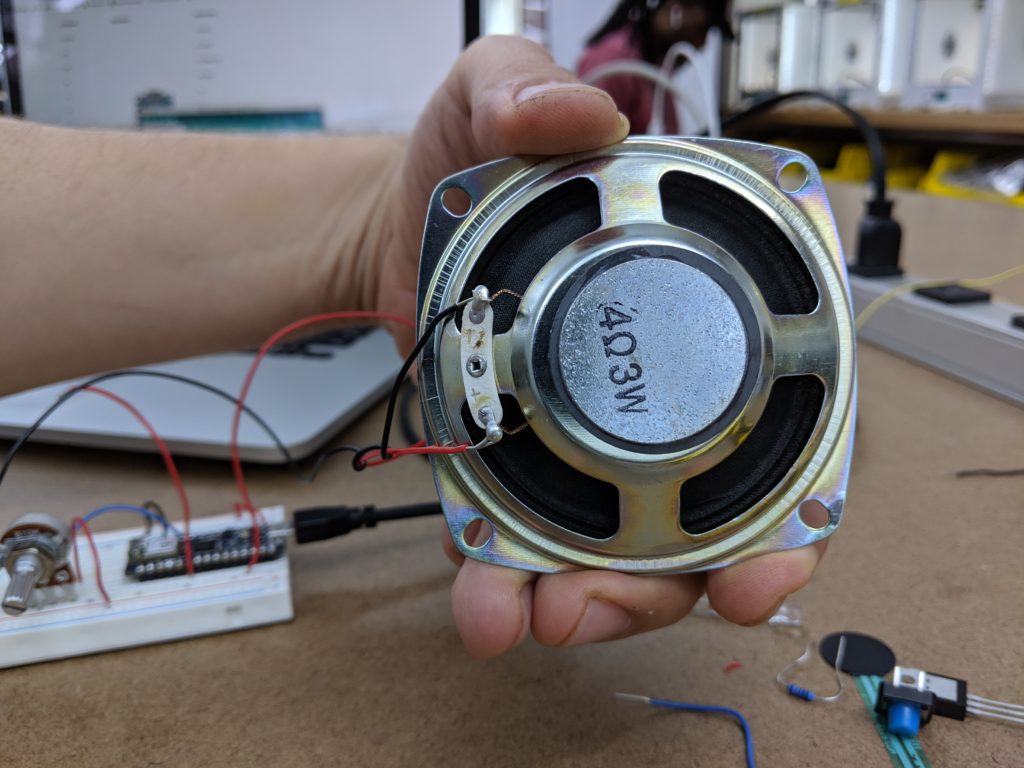This week I created my first arduino circuits with analog input. Using the servo library and controlling the servo motion with a potentiometer was successful. Then I tried using a power sensor, the FSR from our kit, as the analog input. The servo responded but would only stop at the two poles – no power applied, or maximum power applied, corresponding to 0 and 180 degrees. I would like to experiment with other sensors to be able to apply fine control over servo movement.
Then I proceeded to test the speaker with the tone function. Connecting the speaker to the board was my first attempt at soldering.
Using the code from the tutorial video, I did not hear much except crackles coming out of the speaker. When I changed the frequency range to 1000 to 5000 Hz, the speaker produced tones, but they were still quite weak and unclean. It also sounded to me like the tones were not changing linearly but jumping in octaves, every time the frequency reached a multiple of 1000.

Seeing that my speaker had a lower resistance (4 ohm) than the one in the demonstration video (8 ohm), I tried changing the resistor after the speaker, from 100 ohm to 200 ohm and then to 47 ohm. I didn’t notice a significant change.
My guess currently is that it has to do with the quality of my soldering. Or a faulty speaker?

Posted in Fall '19 - Introduction to Physical Computation |